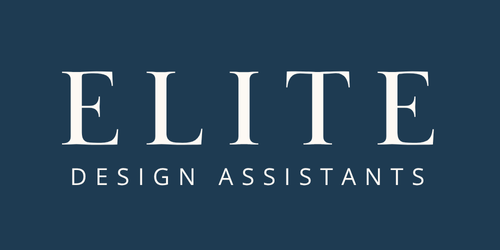What Does It Really Mean to "Educate" Your Clients?
/Originally Posted on January 24, 2025 / Updated on May 17, 2025
When you hear the phrase "educate your clients," does it conjure images of standing at a chalkboard, diagramming the difference between a loveseat and a settee? Or maybe, you picture a client nodding eagerly as you cover the finer points of fabric durability? (Spoiler: it’s neither of these.) Educating your clients isn’t about lecturing; it’s about giving them the confidence to make decisions and the clarity to trust yours.
Here’s the thing: interior design can feel overwhelming for those new to it. Most clients walk in with a Pinterest board full of dreams and a vocabulary that maxes out at “modern farmhouse.” They want the magic but aren’t always sure how it’s made. That’s where you come in—not to play professor, but to guide them through the process with a little patience, a lot of insight, and just enough humor to keep it from feeling like a chore.
The Balance Between Informative and Intuitive
Your clients don’t need a masterclass in lighting fixtures or upholstery techniques (though you’d absolutely crush teaching one). What they need is a high-level understanding of how your decisions will improve their lives and their spaces. Instead of overwhelming them with jargon, find the sweet spot: enough information to build trust without derailing the conversation into minutiae.
For example, if a client asks why you’re recommending a wool rug, skip the technical rundown of fiber resilience. Instead, try this: “Wool holds up beautifully over time, even in high-traffic areas, and it’s easier to clean when life happens—because it always does.” Boom. You’ve addressed their curiosity, given them a practical reason to agree, and left them feeling like you’ve got their back.
Anticipate the FAQs
Part of educating your clients is staying one step ahead. Think about the questions you’ve been asked a hundred times before:
“Why is this so expensive?”
“How long will it take?”
“Can we just DIY this part?”
Instead of waiting for these to pop up (often at the least convenient moment), weave the answers into your initial conversations. Transparency—about timelines, budgets, and what’s realistically possible—goes a long way in building trust. When clients feel informed, they’re far less likely to balk at a quote or a lead time later on.
Teach Without Preaching
Nobody likes a know-it-all, even when they really do know it all. The trick is to share your expertise without making your client feel like they’re out of their depth. Avoid saying things like, “Actually, that’s not how it works,” or, “You’re wrong about that.” Instead, reframe your response: “I see why you’d think that—a lot of people do. But here’s why this approach might work better for your space.”
By validating their perspective first, you’re keeping the conversation collaborative rather than corrective. This approach builds rapport and shows that you value their input, even if it’s a little off-base.
Show Them the Process
Clients often come to you without a clear understanding of how much a renovation or furnishings can cost, nor how design fees or mark-ups work. While you don’t need to tell them all of your backend operations, a little transparency goes a long way. Breaking down costs in an approachable way helps them see the value in each element and reduces sticker shock later.
You can also let them see what goes into the decisions you’re making. This doesn’t mean sharing every single email with vendors, but it can mean walking them through your mood boards or showing them how you’ve narrowed down options for their project.
For instance, if you’re proposing a custom-built shelving unit, explain why the measurements matter and how it’ll elevate their storage game. “This is designed to perfectly fit your collection of antique cameras and leave room for a few books or decorative accents. It’ll keep things looking intentional rather than cluttered.” Now they’re not just hearing “custom shelving”—they’re picturing the end result and understanding the “why” behind it.
Humor Is Your Secret Weapon
Let’s face it: there will be moments when your client’s eyes glaze over, especially during discussions about lead times or budget breakdowns. That’s when a well-placed joke or lighthearted comment can save the day. Humor makes you approachable and reminds your clients that, at the end of the day, this process should be fun. After all, they’re creating a home, not enduring a tax audit.
For example, if a client groans about how long it’ll take to get their dream sofa, you might say, “I know…but hey, it’ll give us plenty of time to debate throw pillow colors.” It’s a small thing, but it keeps the tone light and the relationship strong.
Educating your clients is about empowerment. It’s about giving them the tools to appreciate and maintain the space you’ve created together while helping them see the value of your expertise. And when they understand the value of what you’re bringing to the table, they’ll trust you to do what you do best.
xx, Danae









